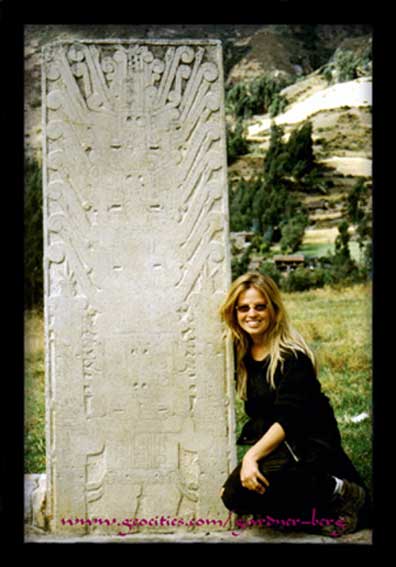
Raimondi Stela, Chavin de Huantar, PERU
| Translate: EspaŮol - FranÁais - Deutsch - Italiano - PortuguÍs - Japanese - Korean - Chinese |

Raimondi Stela, Chavin de Huantar, PERU
| Translate: EspaŮol - FranÁais - Deutsch - Italiano - PortuguÍs - Japanese - Korean - Chinese |

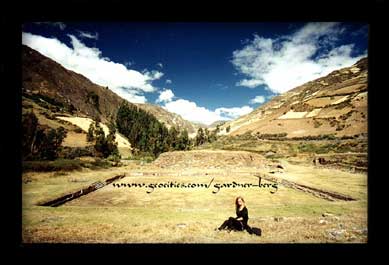
JULY 4, 2000 -- A pleasant walk to Willkahuain ruin (8km) gave us an insight on Huari granite construction. There, we view the ingenious use of large stone slabs for a roof framework in which follows the smaller stones in brick-laying style.
JULY 6, 2000 -- We embark on a 4 hour bus ride heading southeast and
then cutting directly across to the other side of the Cordillera Blanca
to Chavin de Huantar ruin site. A spectacular ride crossing the
mountain range reaching heights of 4500 m.a.s.l. through a rock-cut
tunnel. It was difficult not to notice the ridiculously dangerous
conditions for the Peruvian road workers (a group of around 20-30) with
nothing but pick axes; 3 pneumatic drills and 1 Catepillar grader as
far as hydraulic equipment goes. No protective gear at all - under very
cold and dry conditions. We arrive at the pleasant town of Chavin
where we stay a couple of nights. Piped music at the Plaza de Armas.
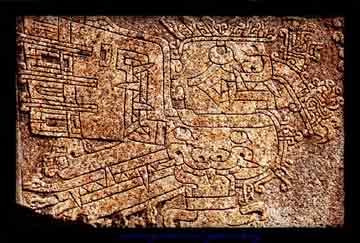
The fortress temple of Chavin de Huantar just a little south of town is in very good condition and is really worth visiting, with tranquil surroundings and grazing llamas. The Chavin culture appeared around 1200 - 1300 BC where gold artifacts with Chavin-style artwork have been found as far north as the Chachapoya region of the Andes. This very old culture is recognised, according to archaeologists, by images of figures with feline features which dominate throughout the friezes and artifacts found here in Chavin. There are indications mentioned by theorists that point to formations of alliances
between cultures around that time. Chavin art style might have been impressive enough to cause a widespread influence where themes and ideas were exchanged through trade, missions and pilgrimage.
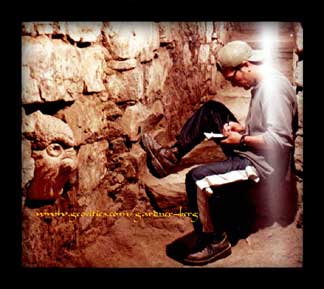
JULY 8, 2000 -- An afternoon bus back to Huaraz.
JULY 11,2000 -- A descending road from mountains, a 6 hour ride on a gravel road crossing the Cordillera Negra (dark mountains) with great views of Cordillera. We then cut through Callan Pass (4224 m.a.s.l.). The trip was filled with vertigo-inducing ups and downs, carefully winding around the rugged contours of this section. It was quite a rough ride and looking out the window, noticing how narrow the road really is and how far the sheer drop
is....well, we just closed our eyes and pretended we were on a airplane flying through a lot of turbulence. It didn't help...
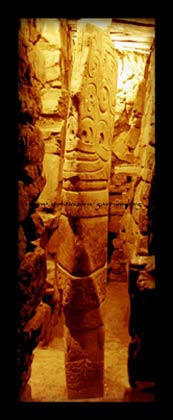
Passing Pariacoto (a little over half way) tropical plants begin to appear; bananas and papayas, mangos and oranges, signals that we were almost at sea level. Our plastic water bottles slowly collapsing as the air pressure changes. We become more alert as more oxygen enters our lungs. But as we approach the desert coast the clear blue sky we had enjoyed in the mountains
turns grey, coloring the land a depressing shade. Sandwiched in between is the damp 'garua' - the mist characteristic of the Peruvian Pacific coast that shows itself each winter (May - November).


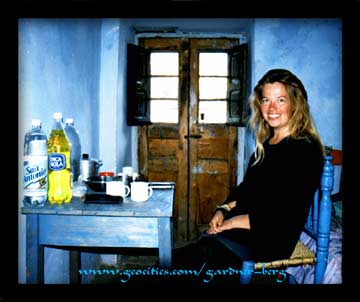
Photos and Text Copyright © 1999-2001 Gardner-Berg. All rights reserved.
Sources of Further Reading-
Burger, Richard L. "Chavin: the Origins of the Andean Civilization" 1995.
Stone-Miller, Rebecca "Art of the Andes: From Chavin to Inca (World of Art)" 1996.

